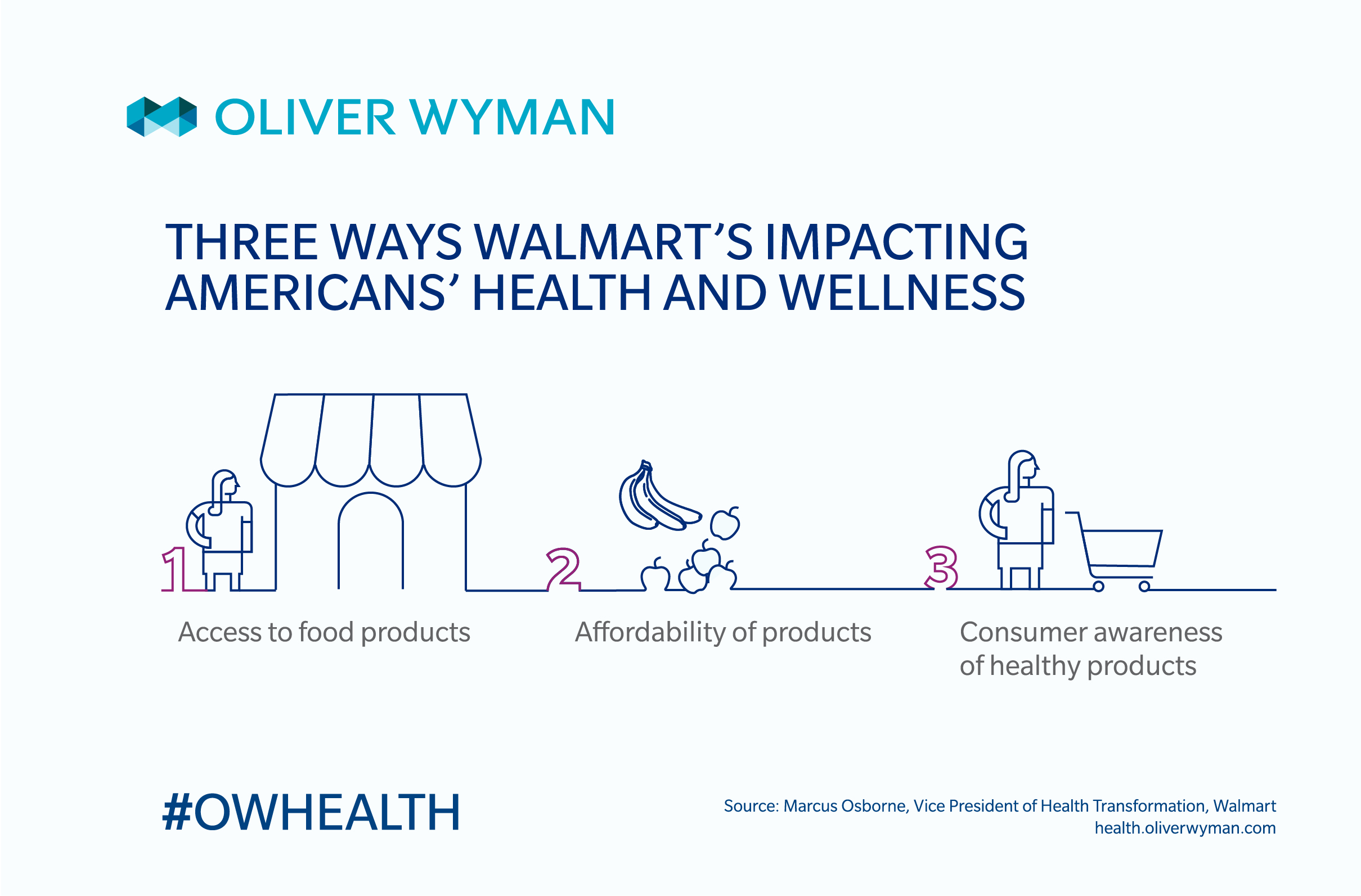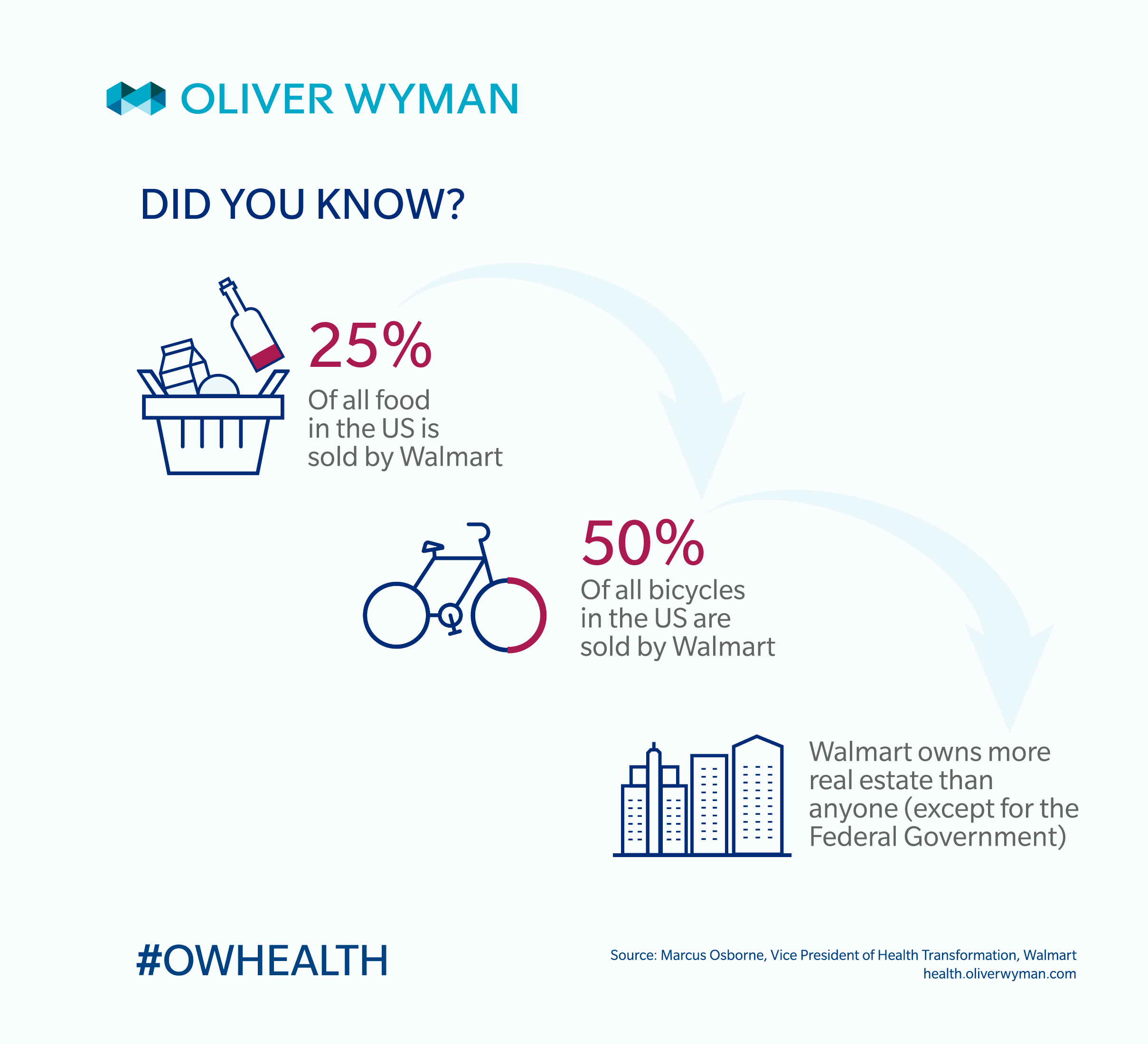In this episode of the Oliver Wyman Health Podcast, Sam Glick, Partner in the Health & Life Sciences practice at Oliver Wyman, chats with Marcus Osborne, Walmart’s Vice President of Health Transformation, about consumer purchasing behavior.
For this episode and more, check out the Oliver Wyman Health Podcast page, featuring executive conversations on the business of transforming healthcare, available on iTunes, iHeartRadio, Soundcloud, Google Play Music, Stitcher, and Spotify. Or, just tell Alexa, "Play Oliver Wyman Health Podcast."
Walmart's Findings on Healthcare Waste
Marcus says a third of what’s spent on healthcare is wasted, maybe not needed, and perhaps even harmful. “We’re spending 18 percent of national GDP on healthcare, which means 6 percent of our entire national GDP you could go out and set on fire,” he adds.
Marcus emphasizes some striking data points tied to healthcare waste from Walmart’s Centers of Excellence Program - Mayo Clinic:
- 90 percent of C-sections and inductions are unnecessary
- More than 80 percent of patients sent for a stent don’t need it
- 10 percent of cancer diagnoses are false
- 30 percent of people had a correct cancer diagnosis but the wrong treatment (for example, they are told they need six months of chemo when they only need six weeks, or chemo radiation and a drug when they only need a drug)
- 20 percent of cancer patients undergo inadequate, inappropriate treatment
“We believe there have got to be providers at the local level who are high value. We should be steering our associates to use those providers. To the extent we can, we should be informing and educating our providers so we can start to up our game and have more providers be truly high value,” Marcus says.

Why’s Walmart Getting Into Healthcare?
“Over half of Americans come into our stores every week. We may be one of the most impactful entities in terms of Americans’ health,” Marcus says. Skeptics around Walmart’s entry into healthcare might change their minds if they knew Walmart’s top selling item wasn’t school supplies, cat food, or holiday decorations, but bananas.
What else is up there? Apples. Regarding the latter, here’s more into why this is. Walmart engaged directly with apple grocers (cutting out the middle man) to buy all the apples they could, at a lower total price per apple. Walmart’s ability to turn “an everyday lower cost into an everyday lower price” resulted in much cheaper apples sold to consumers. Apples then became one of the most purchased item in Walmart — without consumer knowledge apple prices had dropped.
Wanting What You Can't Have
An informed consumer is an engaged consumer. As Marcus said at last year's Oliver Wyman Health Innovation Summit, restriction of choice doesn't impact consumer behavior. Just like the prohibition, (where there was a massive spike in alcohol consumption) consumer health solutions aren't about restrictions, he told attendees. For instance, when Walmart took tobacco off their shelves, tobacco consumption went up.
“If you bring products to people where they are and make the products affordable, you are going to increase the likelihood consumers engage,” Marcus says. “What a consumer just wants to know is, ‘Is this healthy or not?’”









